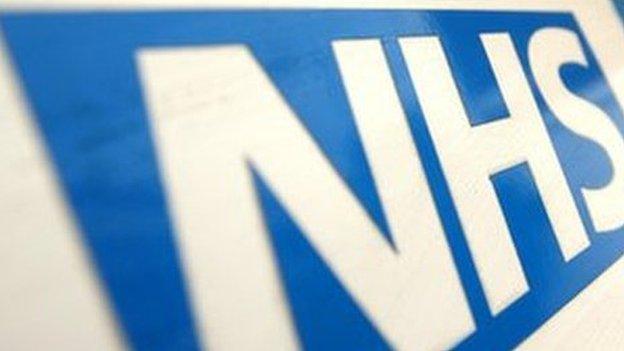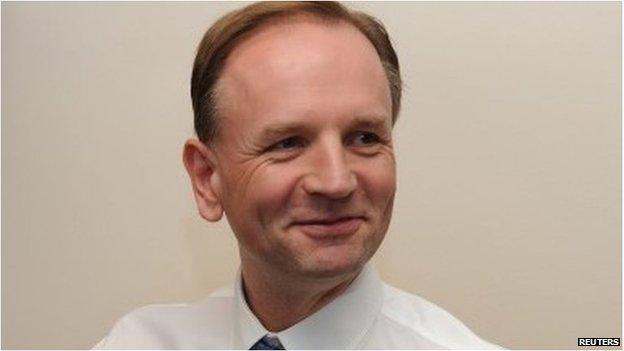Dropping the 'N' in NHS
- Published

The NHS does what is says on the tin. It provides a national health service. That is to say one where equal and consistent services are available across the country.
That has only been achieved by a command-and-control approach to running the service. Ever since the health service was formed in 1948, national plans have been issued and national plans have been followed.
But could the new boss of the NHS in England, Simon Stevens, be set to break the mould? Over the course of the past week - firstly in his interview with the Daily Telegraph and then in his speech to the NHS Confederation conference - one thing has stood out above everything else: his emphasis on the local.
At the end of last week he told the newspaper, external he sees a role for local hospitals in the face of the perceived wisdom that they should be scaled down.
Then this week he set out his vision in a little more detail to the conference of health managers. This is what he told the meeting in Liverpool: "We need different solutions for diverse communities. Horses for courses, not one-size fits all."
This makes sense. England is a diverse country and needs vary from place-to-place. Innovation comes in many forms - as some of the most successful programmes of recent years show.
London's reform of stroke services is often held up as proof of the importance of the centralisation of services. The capital overhauled stroke care in 2010 to create eight specialist hubs instead of spreading them across 30 sites as it used to.
Research has shown it has reduced death rates by 12%, making the capital's services the safest in Britain.
But London is unique in that nowhere else in the country would you find such a concentration of hospitals. Just because it worked there does not mean that model could be applied elsewhere. Indeed, it hasn't.
Another area often praised for the way it has reorganised services is Torbay. It has integrated health and care budgets to help build services around its elderly population. The approach has helped reduce hospital admissions.
But, like London's stroke model, the system cannot just be replicated up-and-down the country. Torbay has a much larger elderly population than average, allowing it to devote large chunks of its budget to them.

Mr Stevens made a speech at the NHS Confederation this week
Nigel Edwards, the chief executive of the Nuffield Trust think-tank, is just one of many people who welcome this change in emphasis.
"Mr Stevens rightly recognises that in a country as large and diverse as England, it is not possible to adopt a single approach of plan. His vision could yield real benefits."
But - and it is a point Mr Edwards acknowledges - there are two major barriers to putting the local into the NHS.
Firstly, there needs to be a change in mindset. The culture of following instructions barked from the top down will take some shifting.
But even if this happens, the second hurdle is likely to be even harder to overcome. Encouraging diversification between areas will almost certainly be challenged in the court of public opinion.
Private polling was carried out by the Labour party some months ago. It was trying to identify what got people most worked up when it came to the NHS.
The expectation was that it would be waiting times or the role of the private sector. It wasn't. The top concern, I am told, was the so-called postcode lottery.
People do not like the idea of variation from one place to another, it seems. They want the "N" in NHS to stay.